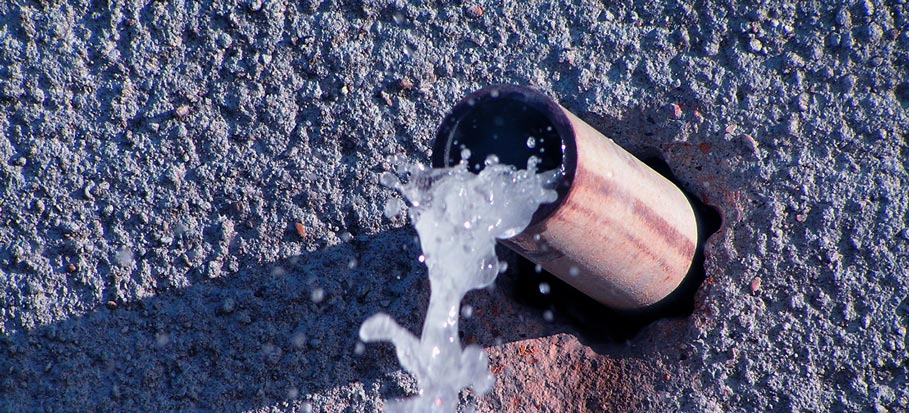6 Ways to Find Hidden Water Leakages in Your House
6 Ways to Find Hidden Water Leakages in Your House
Blog Article
What are your thoughts and feelings about Locating water leaks?

Early detection of dripping water lines can alleviate a possible disaster. Some tiny water leaks may not be visible.
1. Take A Look At the Water Meter
Every residence has a water meter. Examining it is a surefire way that helps you discover leaks. For starters, turn off all the water sources. Guarantee nobody will flush, utilize the faucet, shower, run the washing device or dishwashing machine. From there, go to the meter and watch if it will transform. Since no one is utilizing it, there should be no movements. If it relocates, that shows a fast-moving leakage. If you find no modifications, wait an hour or two and examine back once more. This indicates you may have a slow-moving leakage that might even be below ground.
2. Check Water Consumption
If you find unexpected changes, despite your intake being the very same, it indicates that you have leaks in your plumbing system. An abrupt spike in your bill suggests a fast-moving leak.
At the same time, a consistent increase on a monthly basis, even with the exact same habits, shows you have a slow-moving leak that's likewise slowly rising. Call a plumber to extensively check your property, particularly if you really feel a cozy area on your floor with piping beneath.
3. Do a Food Coloring Examination
When it comes to water usage, 30% comes from toilets. If the color somehow infiltrates your bowl during that time without flushing, there's a leak between the storage tank as well as dish.
4. Asses Outside Lines
Don't forget to examine your exterior water lines too. Should water permeate out of the connection, you have a loose rubber gasket. One little leakage can squander loads of water and also surge your water expense.
5. Examine the circumstance and evaluate
House owners ought to make it a habit to inspect under the sink counters and also inside cupboards for any bad odor or mold and mildew growth. These 2 red flags suggest a leakage so timely attention is called for. Doing routine examinations, even bi-annually, can conserve you from a major trouble.
If you understand your home is already old, maintain a watchful eye on your heating units, hoses, pipes and so on. Check for stainings and also weakening as a lot of appliances as well as pipelines have a life expectancy. They will certainly additionally naturally degrade as a result of wear and tear. If you suspect leaking water lines in your plumbing system, do not await it to escalate. Call a professional plumber as soon as possible so you do not end up with an awful mess in your home.
Early detection of leaking water lines can minimize a potential disaster. Some small water leakages may not be visible. Checking it is a guaranteed method that helps you find leaks. One tiny leak can lose heaps of water and also increase your water bill.
If you suspect leaking water lines in your plumbing system, don't wait for it to escalate.
WARNING SIGNS OF WATER LEAKAGE BEHIND THE WALL
PERSISTENT MUSTY ODORS
As water slowly drips from a leaky pipe inside the wall, flooring and sheetrock stay damp and develop an odor similar to wet cardboard. It generates a musty smell that can help you find hidden leaks.
MOLD IN UNUSUAL AREAS
Mold usually grows in wet areas like kitchens, baths and laundry rooms. If you spot the stuff on walls or baseboards in other rooms of the house, it’s a good indicator of undetected water leaks.
STAINS THAT GROW
When mold thrives around a leaky pipe, it sometimes takes hold on the inside surface of the affected wall. A growing stain on otherwise clean sheetrock is often your sign of a hidden plumbing problem.
PEELING OR BUBBLING WALLPAPER / PAINT
This clue is easy to miss in rooms that don’t get much use. When you see wallpaper separating along seams or paint bubbling or flaking off the wall, blame sheetrock that stays wet because of an undetected leak.
BUCKLED CEILINGS AND STAINED FLOORS
If ceilings or floors in bathrooms, kitchens or laundry areas develop structural problems, don’t rule out constant damp inside the walls. Wet sheetrock can affect adjacent framing, flooring and ceilings.
https://www.servicemasterbyzaba.com/blog/how-to-detect-water-leakage-in-walls/

I ran across that blog post on Detecting hidden plumbing leaks when doing research the search engines. Feel free to set aside a second to share this post if you appreciated it. Thank you so much for your time spent reading it.
Report this page